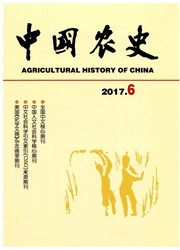

 中文摘要:
中文摘要:
西金城遗址淀粉粒分析表明,来源于小麦族(the Tribe Triticeae)大麦属(Hordeum spp.)的淀粉最多,约占淀粉粒总数的70%,其次为粟(Setaria italica)、黍(Panicum miliaceum)。此外还有少量疑似高粱属(Sorghum spp.)、豆科(Leguminosae)及块根块茎类植物淀粉粒。据此结果可推断,西金城遗址的先民采用了多种作物混耕,并辅以少量采集经济的生计模式。其中尤其是大量大麦属淀粉粒的发现表明中原地区的先民早在4000年前的龙山文化时期即已开始种植麦类作物,这对研究麦类作物在中国的起源、传播及扩散均具有重要意义。同时,通过器物不同部位残存的淀粉粒也可以有效对其用途进行判定。
 英文摘要:
英文摘要:
We have found that starch grains from hordeum (Hordeum spp. ) of the Tribe Triticeae are the most popular at Xijincheng site, which account for 70%. Besides this, there are some starch grains from foxtail millet (Setaria itallca), broomcorn millet (Panlcum miliaceum).Then few starch grains of suspected sorghum (Sorghum spp. ), Leguminosae and tuber are discovered. According to the findings, I consider that a variety of crops were cultivated at this site, but gathering was indispensable too. I also suggest the peoples of Central China began to grow the crops of the Tribe Triticeae at Longshan period four thousand years ago, which are very important for studying the origin and diffusion of the Tribe Triticeae. At the same time, the function of these ar- tifacts can be confirmed by starch grain analysis.
 同期刊论文项目
同期刊论文项目
 同项目期刊论文
同项目期刊论文
 期刊信息
期刊信息
